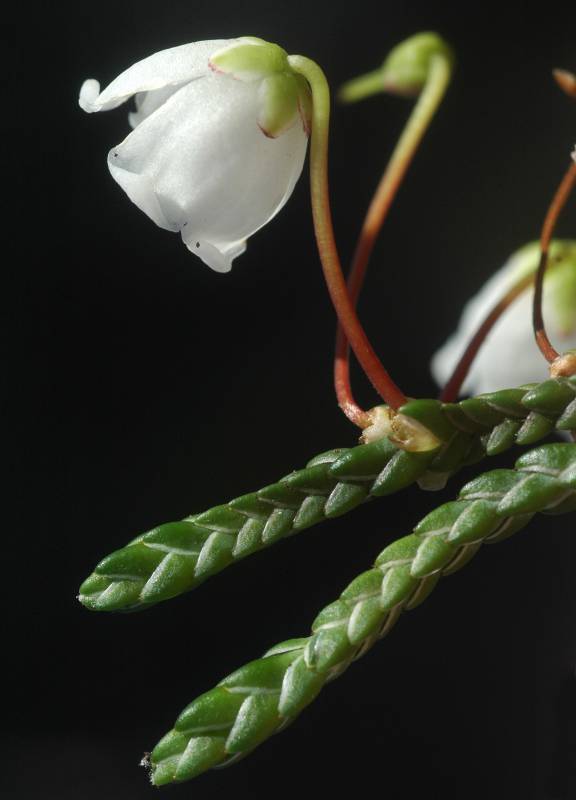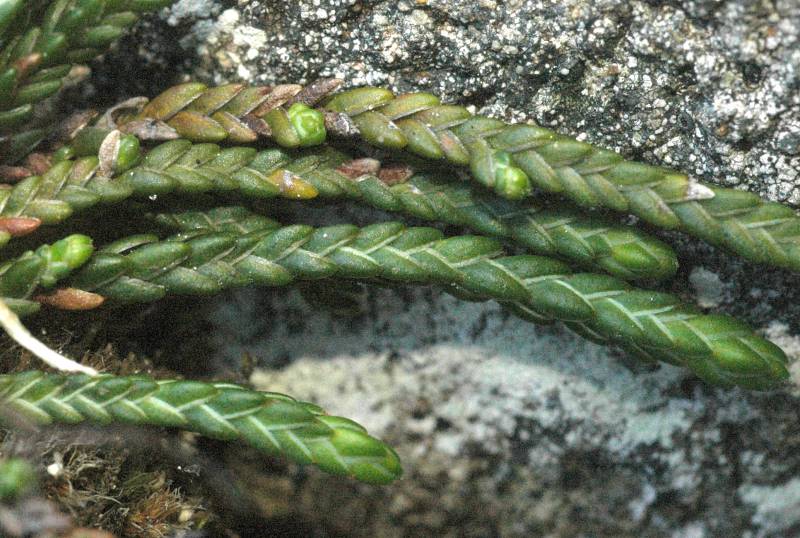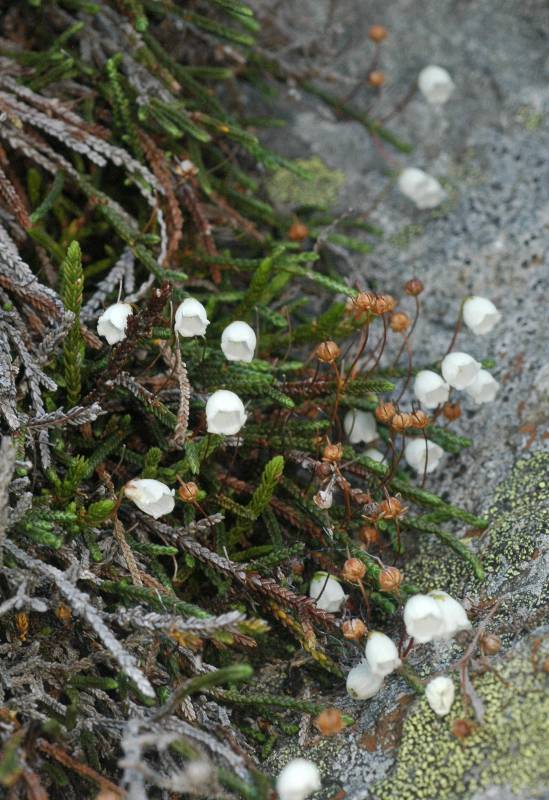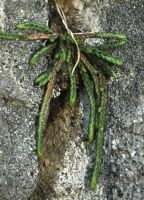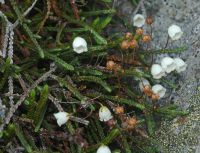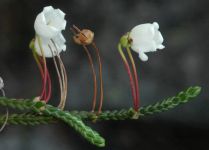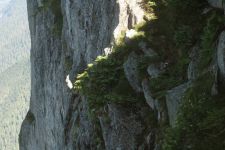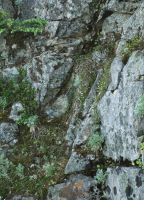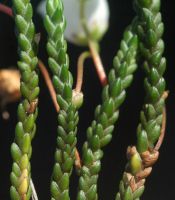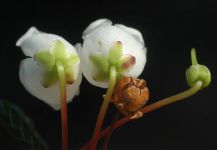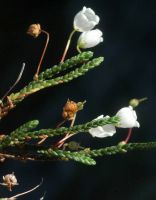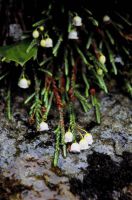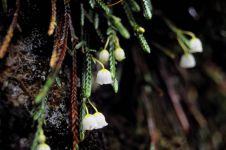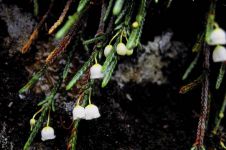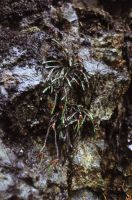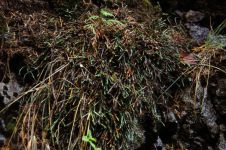Distribution: Occurring west of the Cascades crest in Washington; Alaska to Washington.
Habitat: Alpine rocky slopes and rock crevices.
Flowers: June-August
Origin: Native
Growth Duration: Perennial
Conservation Status: Threatened in Washington (WANHP)
Pollination: Bumblebees, bees
Perennial, deciduous or evergreen, usually autotrophic, sometimes mycotrophic; ascendant to mat-forming shrubs, stems hirsute, length varying.
Opposite, sessile, edges opposite (somewhat imbricate), appressed to stems; blade linear to lanceolate, without abaxial groove, 2-3 mm long x 0.5-1.2 mm wide, curled hairs present at leaf apex, abaxial base and adaxial surface hairy, margins scarious.
Sepals distinct, 1.5-2 mm long, margins slightly hyaline to opaque; petals 6-8 mm long, connate, apex curved, corolla white, bell-shaped to distinctly campanulate; stamens up to 3 mm long.
Capsules, 3 mm. diameter, borne on erect pedicels, subglobose to ovoid.
Publication: Edinburgh New Philos. J. 17: 158. 1834.
PNW Herbaria: Specimen records of Cassiope lycopodioides in the Consortium of Pacific Northwest Herbaria database
WA Flora Checklist: Cassiope lycopodioides checklist entry
OregonFlora: Cassiope lycopodioides information
E-Flora BC: Cassiope lycopodioides atlas page
CalPhotos: Cassiope lycopodioides photos

